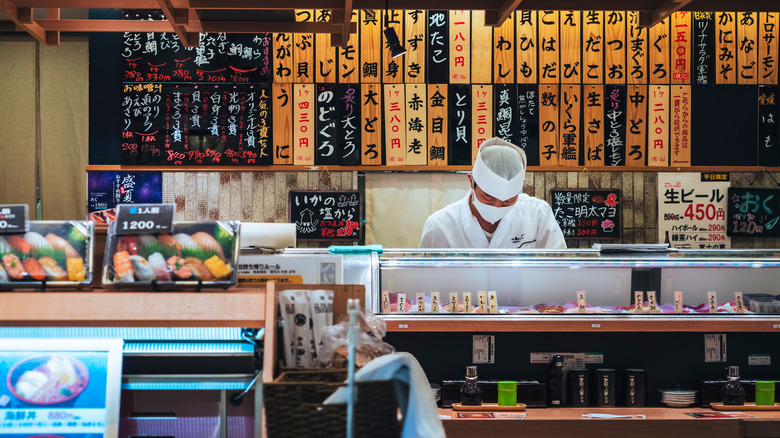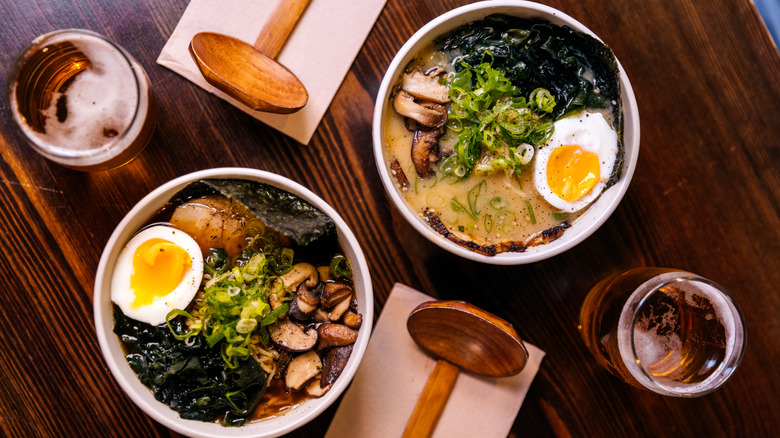Why Tourists Will Likely Struggle To Find Restaurants With High Ratings In Japan
You've just landed in Tokyo, stomach rumbling, phone in hand. You open Tabelog to check out places to eat because you know locals don't use Google Maps to find food in Japan. And ... huh? Why does every place have 3.5 stars? Well, in Japan, five-star food rarely gets five-star reviews.
According to Wayfinder, "97% of restaurants on Tabelog have a rating of 3.5 or less". Only around 500 restaurants in the whole country manage to edge above 4 out of 5 stars. It's not because the food isn't incredible. It's because the rating system reflects a cultural blend of humility and a tendency toward comparison. Many diners in Japan rate a meal on how well it stacks up against others they've eaten, and therefore, a delicious dinner might get a 3/5 because it's not the best meal they've ever had.
On top of that, there's a cultural tendency to avoid lavishing praise on others. A 5-star rating may feel excessive, while a 3-star review feels just right for a very tasty meal. Add to the fact that Japan is a collectivist society, where people think hard about how their actions impact others. This means that Japanese people may hesitate to recommend a place unless they're certain it'll suit everyone. All of these reasons add up to result in "meh" reviews for restaurants that in the U.S. would get a solid five stars.
How to actually find good restaurants in Japan
So, how can you pick out the wheat from the chaff (or the outstanding okonomiyaki from the mediocre)? First, you'll need to throw out your preconceptions. A restaurant with anything below four stars should usually be approached with caution back in the U.S. In Japan, a place with 3.5 on Tabelog might serve the best meal of your life. When using Tabelog, look for places with a rating above about 3.5/5. And if you're using Google Maps, tread carefully. Places with super high ratings might count more tourists than locals among their patrons. That's not necessarily a bad thing, but the rating might be inflated, and the experience may cater more to visitors than locals.
Another tried and true method is to trust your own instincts (and your eyes!). A place packed with locals is always a good sign — and you'll be following culinary legend Anthony Bourdain's advice for finding the best places to eat. If you show up to a restaurant with a line of foreigners out the door and a suspicious amount of English being spoken, reconsider your choice. You could be in for disappointingly bland sushi or a meal at one of Japan's most overrated ramen restaurants. In short, trust the locals, and don't be afraid to dive into that cozy, unassuming spot with 3.4 stars. In Japan, the best meals often come from the places you least expect.

